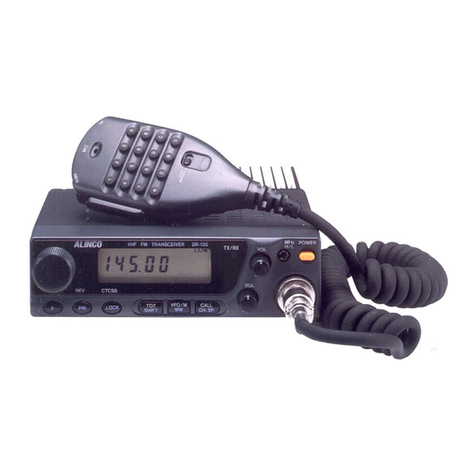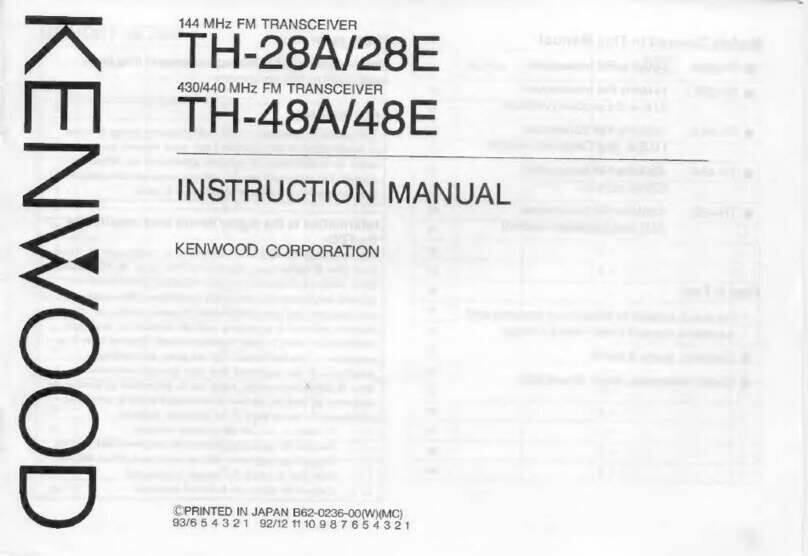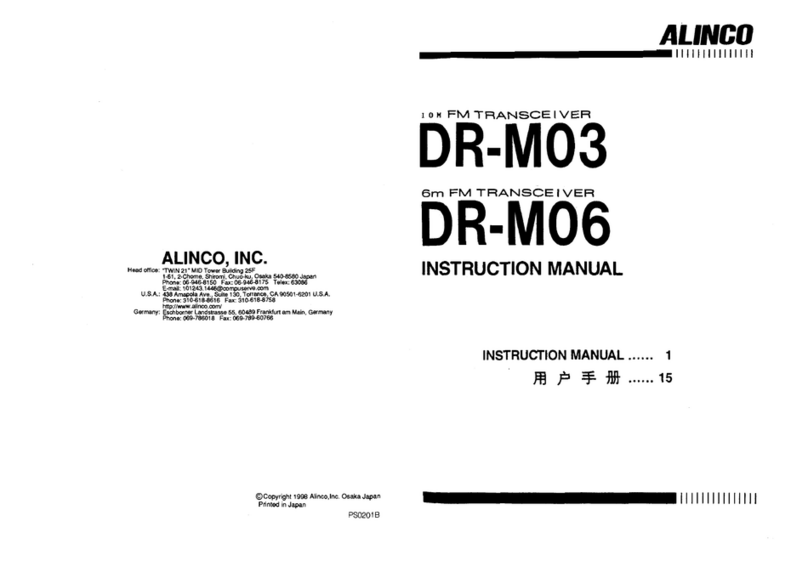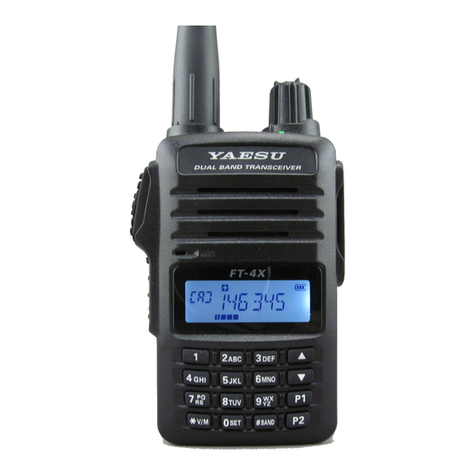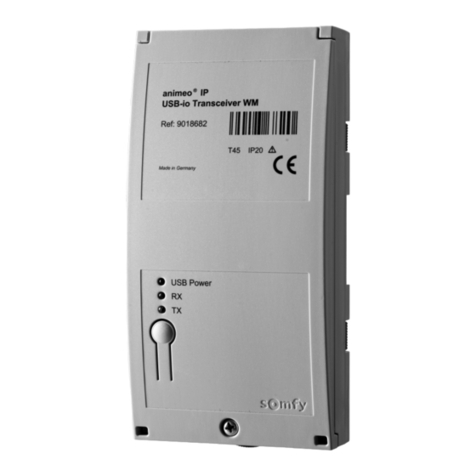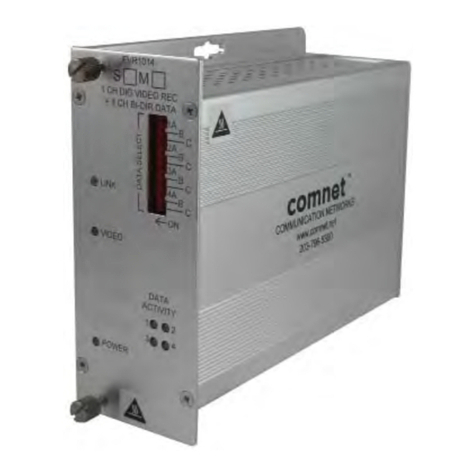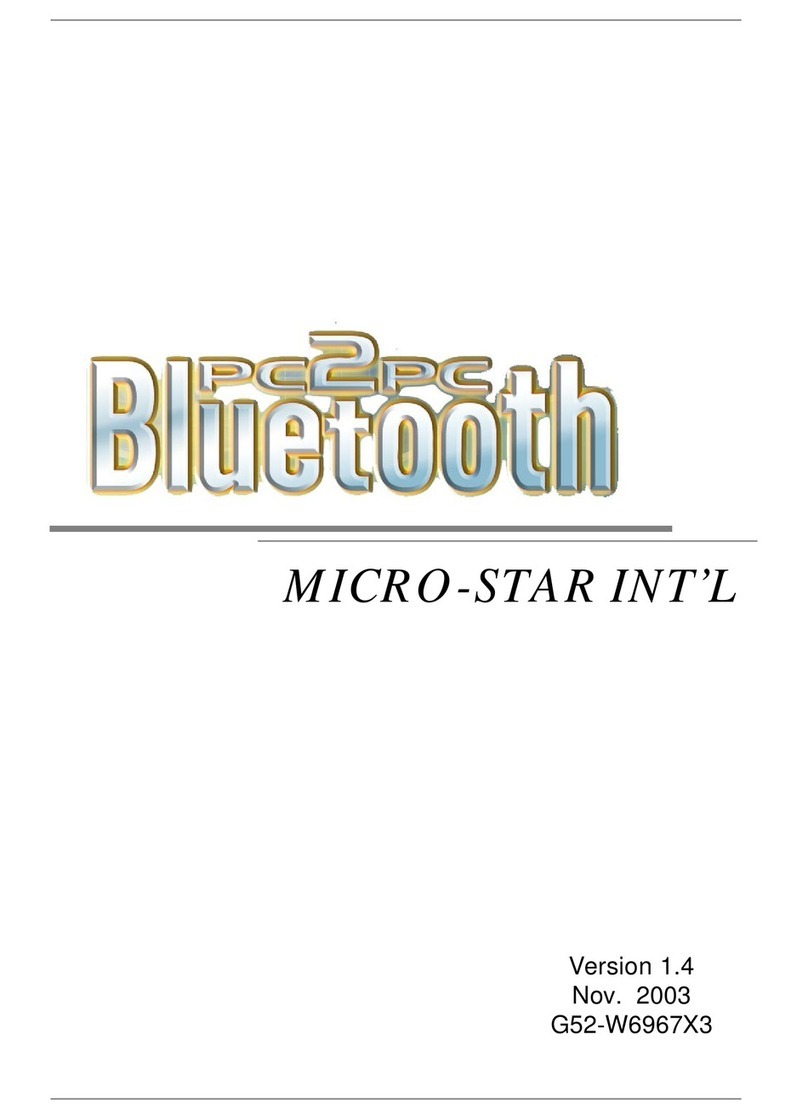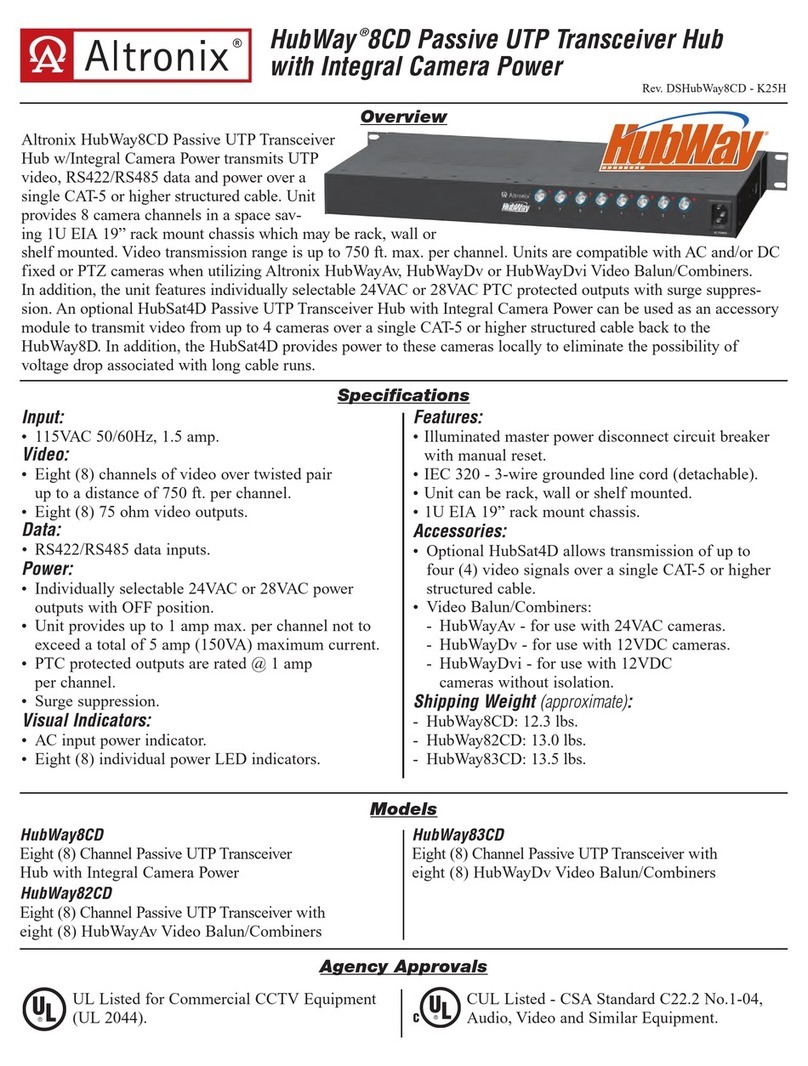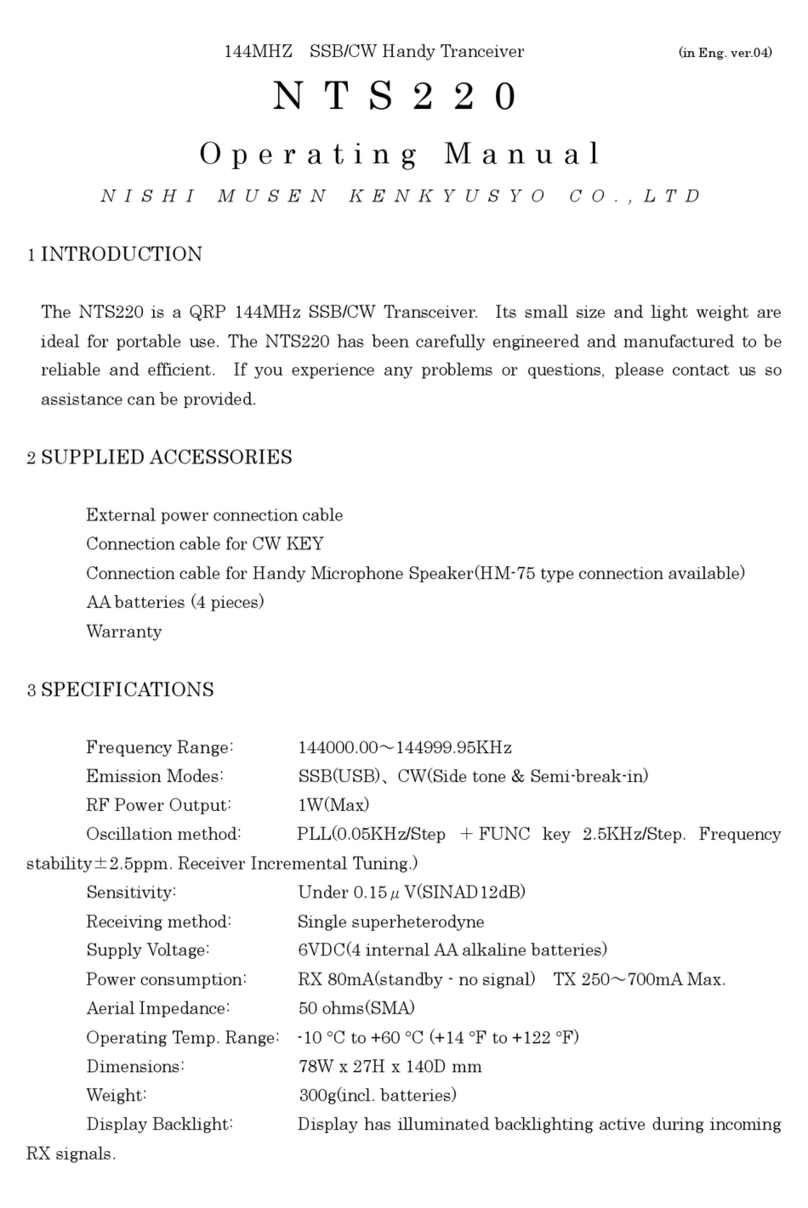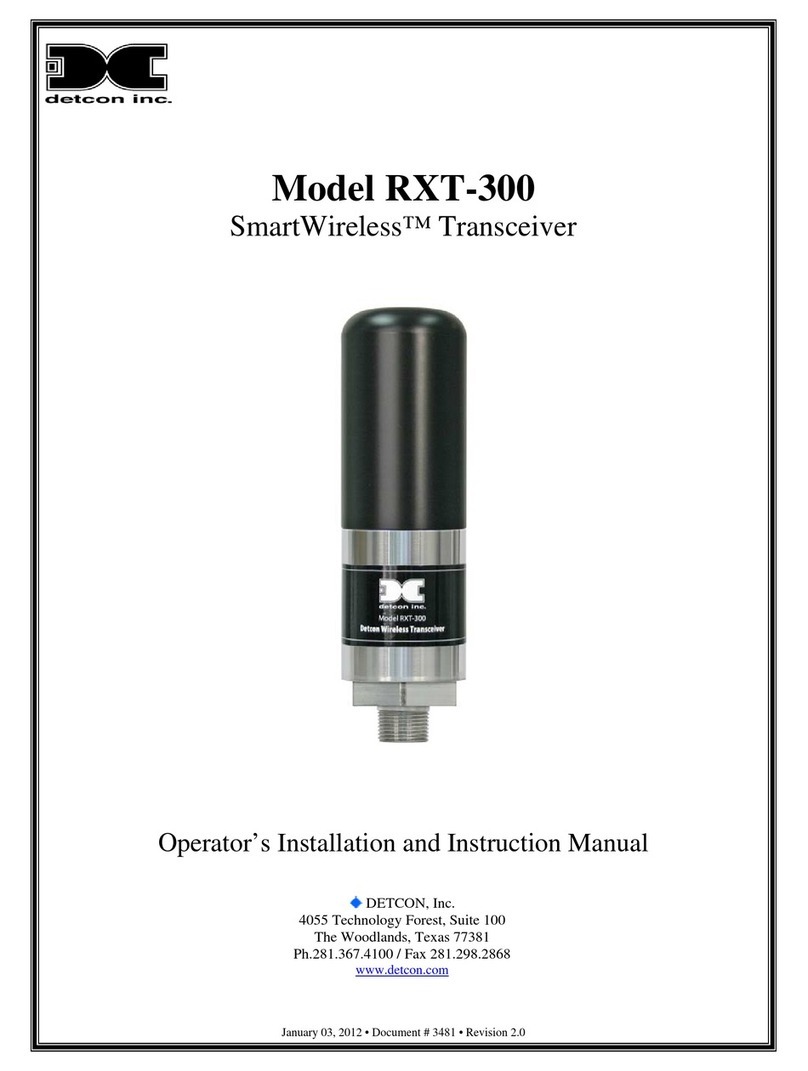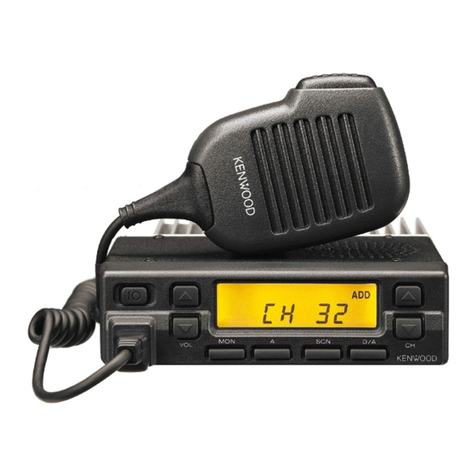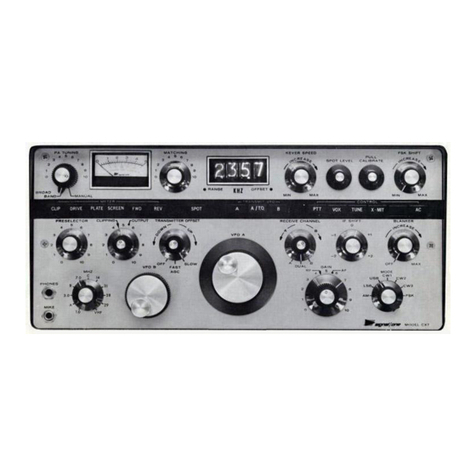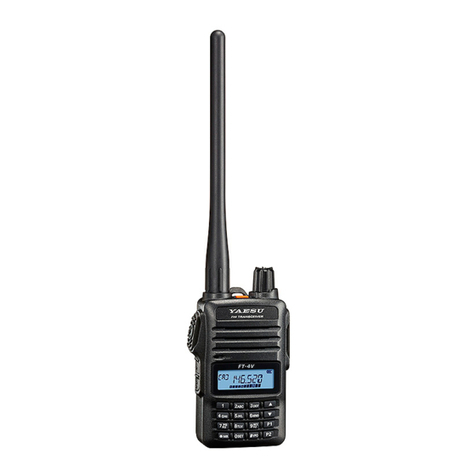Epiq Solutions Sidekiq X4 Use and care manual

Sidekiq™ X4
RF Transceiver • High Performance
INTEGRATION MANUAL
V1.2 - MARCH 03, 2022

Sidekiq™ X4 | Integration Manual
CHANGELOG
Revision Date Description Author
0.1 2019-11-07 Pre-release draft, initial version Barry L
0.2 2020-01-31 Barry L
0.3 2020-07-02 Updated figure 5, section 7.2 Barry L
1.0 2020-09-10 Updated figure 3 to reflect rev C architecture. Added data sheet link to the Si53307
clock mux. Markdown conversion Barry L
1.1 2020-09-16 Added i2c device table, I/O exp and current sensor info, data sheet links, update
integration steps Barry L
1.2 2022-03-03 Added ad9528 initialization information Barry L

Sidekiq™ X4 | Integration Manual
DISCLAIMER
Epiq Solutions is disclosing this document (“Documentation”) as a general guideline for development. Epiq
Solutions expressly disclaims any liability arising out of your use of the Documentation. Epiq Solutions
reserves the right, at its sole discretion, to change the Documentation without notice at any time. Epiq
Solutions assumes no obligation to correct any errors contained in the Documentation, or to advise you of any
corrections or updates. Epiq Solutions expressly disclaims any liability in connection with technical support or
assistance that may be provided to you in connection with the Information. THE DOCUMENTATION IS
DISCLOSED TO YOU “AS IS” WITH NO WARRANTY OF ANY KIND. EPIQ SOLUTIONS MAKES NO
OTHER WARRANTIES, WHETHER EXPRESSED, IMPLIED, OR STATUTORY, REGARDING THE
DOCUMENTATION, INCLUDING ANY WARRANTIES OF MERCHANTABILITY, FITNESS FOR A
PARTICULAR PURPOSE, OR NON-INFRINGEMENT OF THIRD PARTY RIGHTS. IN NO EVENT WILL
EPIQ SOLUTIONS BE LIABLE FOR ANY CONSEQUENTIAL, INDIRECT, EXEMPLARY, SPECIAL, OR
INCIDENTAL DAMAGES, INCLUDING ANY LOSS OF DATA OR LOST PROFITS, ARISING FROM YOUR
USE OF THE DOCUMENTATION.

Sidekiq™ X4 | Integration Manual
. . . . . . . . . . . . . . . . . . . . . . . . . . . . . . . . . . . . . . . . . . . . . . . . . . . . . . . . . . . . . . . . . . . . . . . . . . . . . . . . . . . . . . . .5
. . . . . . . . . . . . . . . . . . . . . . . . . . . . . . . . . . . . . . . . . . . . . . . . . . . . . . . . . . . . . . . . . . . . . . . . . . . . . . . . . . . . . . . .6
. . . . . . . . . . . . . . . . . . . . . . . . . . . . . . . . . . . . . . . . . . . . . . . . . . . . . . . . . . . . . . . . . . . . . . . . . . . . . . . . . . . . . . . .7
. . . . . . . . . . . . . . . . . . . . . . . . . . . . . . . . . . . . . . . . . . . . . . . . . . . . . . . . . . . . . . . . . . . . . . . . . . . . . . . . . . . . . . . .8
. . . . . . . . . . . . . . . . . . . . . . . . . . . . . . . . . . . . . . . . . . . . . . . . . . . . . . . . . . . . . . . . . . . . . . . . . . . . . . . . . . . . . . . .9
. . . . . . . . . . . . . . . . . . . . . . . . . . . . . . . . . . . . . . . . . . . . . . . . . . . . . . . . . . . . . . . . . . . . . . . . . . . . . . . . . . . . . . . .11
13
. . . . . . . . . . . . . . . . . . . . . . . . . . . . . . . . . . . . . . . . . . . . . . . . . . . . . . . . . . . . . . . . . . . . . . . . . . . . . . . . . . . . . . 14
. . . . . . . . . . . . . . . . . . . . . . . . . . . . . . . . . . . . . . . . . . . . . . . . . . . . . . . . . . . . . . . . . . . . . . . . . . . . . . . . . . . . . . 14
. . . . . . . . . . . . . . . . . . . . . . . . . . . . . . . . . . . . . . . . . . . . . . . . . . . . . . . . . . . . . . . . . . . . . . . . . . . . . . . . . . . . .16
19
. . . . . . . . . . . . . . . . . . . . . . . . . . . . . . . . . . . . . . . . . . . . . . . . . . . . . . . . . . . . . . . . . . . . . . . . . . . . . . . . . . . . . . 19
. . . . . . . . . . . . . . . . . . . . . . . . . . . . . . . . . . . . . . . . . . . . . . . . . . . . . . . . . . . . . . . . . . . . . . . . . . . . . . . . . . . . . . 20
22
. . . . . . . . . . . . . . . . . . . . . . . . . . . . . . . . . . . . . . . . . . . . . . . . . . . . . . . . . . . . . . . . . . . . . . . . . . . . . . . . . . . . . . 23
. . . . . . . . . . . . . . . . . . . . . . . . . . . . . . . . . . . . . . . . . . . . . . . . . . . . . . . . . . . . . . . . . . . . . . . . . . . . . . . . . . . . . . 24
. . . . . . . . . . . . . . . . . . . . . . . . . . . . . . . . . . . . . . . . . . . . . . . . . . . . . . . . . . . . . . . . . . . . . . . . . . . . . . . . . . . . . . 24
. . . . . . . . . . . . . . . . . . . . . . . . . . . . . . . . . . . . . . . . . . . . . . . . . . . . . . . . . . . . . . . . . . . . . . . . . . . . . . . . . . . . .24
. . . . . . . . . . . . . . . . . . . . . . . . . . . . . . . . . . . . . . . . . . . . . . . . . . . . . . . . . . . . . . . . . . . . . . . . . . . . . . . . . . . . .24
25
. . . . . . . . . . . . . . . . . . . . . . . . . . . . . . . . . . . . . . . . . . . . . . . . . . . . . . . . . . . . . . . . . . . . . . . . . . . . . . . . . . . . . . 25
. . . . . . . . . . . . . . . . . . . . . . . . . . . . . . . . . . . . . . . . . . . . . . . . . . . . . . . . . . . . . . . . . . . . . . . . . . . . . . . . . . . . . . 25
. . . . . . . . . . . . . . . . . . . . . . . . . . . . . . . . . . . . . . . . . . . . . . . . . . . . . . . . . . . . . . . . . . . . . . . . . . . . . . . . . . . . . . . .26
. . . . . . . . . . . . . . . . . . . . . . . . . . . . . . . . . . . . . . . . . . . . . . . . . . . . . . . . . . . . . . . . . . . . . . . . . . . . . . . . . . . . . . . .27
. . . . . . . . . . . . . . . . . . . . . . . . . . . . . . . . . . . . . . . . . . . . . . . . . . . . . . . . . . . . . . . . . . . . . . . . . . . . . . . . . . . . . . . .28
TABLE OF CONTENTS
Introduction
Legal Considerations
Proper Care and Handling
References
Terms and Definitions
Hardware Overview
JESD Clocking System
Reference Selection
AD9528 Configuration
AD9528 Register Values
ADRV9009 RFIC Devices
ADRV9009 Connections to FMC
RF Front End
Sidekiq X4 I2C Devices
IO Expander
Current Sensors 3.3V and 12V
VITA EEPROM
VITA EEPROM Address Map
User EEPROM Address Map
Others
Front Panel 1PPS
LED Control
FMC Power Requirements
Integration Steps
Appendix A – rev B JESD Clocking Structure

Sidekiq™ X4 | Integration Manual Introduction
Epiq Solutions Proprietary Page 5
This document is a detailed summary of the hardware interfaces for Epiq Solutions' Sidekiq X4
multichannel RF transceiver card [1], a VITA 57.1 compliant FPGA mezzanine card (FMC) utilizing
the high pin count (HPC) interface. This manual is meant to be used in conjunction with the Sidekiq
X4 Hardware Users’ Manual [5] to provide a complete picture of the hardware signaling and
interfacing requirements for Sidekiq X4. Those customers who do not wish to use the libsidekiq
software API and FPGA reference design included in the Sidekiq X4 Platform Development Kit can
use these two manuals to create their own FPGA firmware and software drivers from scratch.
It is strongly recommended to use Epiq’s libsidekiq software and FPGA reference design. The
Sidekiq X4 PDK includes both software and FPGA reference design code to control/interface with
one of several different FPGA carrier cards with an FMC host interface. These platforms are
considered “golden reference” platforms where functionality of the Sidekiq X4 card is guaranteed to
work. Epiq makes no claim that Sidekiq X4 will work on every FMC host platform, as different FMC
host platforms may behave differently. Verifcation and validation of Sidekiq X4 on a customer’s host
platform with their own software and/or FPGA design is solely the responsibility of the customer.
Every Sidekiq X4 board shipped from Epiq is fully tested in a golden reference platform and
guaranteed working at time of shipment.
All documentation and support for Sidekiq X4 is provided through Epiq Solutions' support website
[2], which can be found at: https://www.epiqsolutions.com/support
Please note that it is necessary to register prior to accessing the relevant information for your
purchase.
INTRODUCTION

Sidekiq™ X4 | Integration Manual Legal Considerations
Epiq Solutions Proprietary Page 6
The Sidekiq X4 is distributed all over the world. Each country has its own laws governing reception
and transmission of radio frequencies. Each user of Sidekiq X4 and associated software is solely
responsible for insuring that it is used in a manner consistent with the laws of the jurisdiction in
which it is used. Many countries, including the United States, prohibit the transmission and reception
of certain frequency bands, or receiving certain transmissions without proper authorization. Again,
the user is solely responsible for the user's own actions.
LEGAL CONSIDERATIONS

Sidekiq™ X4 | Integration Manual Proper Care and Handling
Epiq Solutions Proprietary Page 7
Each Sidekiq X4 card is fully tested by Epiq Solutions before shipment, and is guaranteed functional
at the time it is received by the customer, and ONLY AT THAT TIME. Improper use of the Sidekiq X4
card can cause it to become non-functional. In particular, a list of actions that may cause damage to
the hardware include the following:
Handling the unit without proper static precautions (ESD protection) when the housing is
removed or opened up
Inserting or removing Sidekiq X4 from a host system when power is applied to the host system
Connecting a transmitter to the RX port without proper attenuation
Executing custom software and/or an FPGA bitstream that was not developed according to
guidelines
The above list is not comprehensive, and experience with the appropriate measures for handling
electronic devices is required.
PROPER CARE AND HANDLING

Sidekiq™ X4 | Integration Manual References
Epiq Solutions Proprietary Page 8
1. Sidekiq X4 Product Page
https://epiqsolutions.com/modules/sidekiq-x4
2. Epiq Solutions Support Page
https://www.epiqsolutions.com/support
3. VITA website
http://www.vita.com
4. Analog Devices' ADRV9009 Wideband Transceiver Product Page
http://www.analog.com/en/products/adrv9009.html
5. Sidekiq X4 Hardware User’s Manual
https://epiqsolutions.com/downloads/sidekiq-x4/
6. Analog Devices’ AD9528 Product Page
https://www.analog.com/en/products/ad9528.html
7. Analog Devices’ AD5660 Product Page
https://www.analog.com/en/products/ad5660.html
8. Atlanta Micro AM3025A Product Page
https://www.atlantamicro.com/products/filters/am3025a/
9. Silicon Labs Si53307 Product Page
https://www.silabs.com/timing/buffers/any-format-clock-buffers/device.si53307-b-gm
10. Texas Instruments TS5A63157 Product Page
https://www.ti.com/product/TS5A63157
11. Texas Instruments INA219 Product Page
https://www.ti.com/product/INA219
REFERENCES

Sidekiq™ X4 | Integration Manual Terms and Definitions
Epiq Solutions Proprietary Page 9
Term Definition
A/D Analog to Digital converter
D/A Digital to Analog converter
dB Decibel
EEPROM Electrically Erasable Programmable Read-Only Memory
ESD ElectroStatic Discharge
FMC FPGA Mezzanine Card
FPGA Field Programmable Gate Array
Fs Sample Rate
GPS Global Positioning System
HPC High Pin Count (a variant of the VITA 57.1 electrical interface)
I/Q In-Phase / Quadrature Phase
I2C Inter-Integrated Circuit
JTAG Joint Test Action Group
KHz Kilohertz
LED Light Emitting Diode
LNA Low Noise Amplifier
LPC Low Pin Count (a variant of the VITA 57.1 electrical interface)
MHz Megahertz
ObsRx Observation Receiver
PDK Platform Development Kit
PPS Pulse Per Second
RF Radio Frequency
Rx Receive
SDK Software Development Kit
SDR Software Defined Radio
SSMC A smaller version of the SubMiniature type C RF connector
TCXO Temperature Compensated Crystal Oscillator
Tx Transmit
USB Universal Serial Bus
TERMS AND DEFINITIONS

Sidekiq™ X4 | Integration Manual Hardware Overview
Epiq Solutions Proprietary Page 11
Sidekiq X4 is a high performance multi-channel RF transceiver card providing a complete “antenna-
to-bits” solution in a VITA 57.1 FPGA mezzanine card (FMC) form factor. Sidekiq X4 leverages two
Analog Devices' ADRV9009 wideband transceiver RFICs [4] to provide the core functionality of the
card. The capability of the card is further enhanced with on-board circuitry to provide RF pre-select
filtering on the RF receivers, support external synchronization inputs, and other features only found
on Sidekiq X4. The key highlights of Sidekiq X4 are enumerated below:
VITA 57.1 FMC compliant card providing a high pin count (HPC) interface
RF tuning range from 1 MHz to 6 GHz
Multiple modes of RX operation
Four phase coherent RX channels (200 MHz BW)
Dual independently tunable RX channels (up to 400 MHz BW)
Multiple modes of TX operation
Four phase coherent TX channels (up to 400 MHz BW)
Dual independently tunable TX channels (up to 400 MHz BW)
16-bit A/D converters supporting sample rates up to 491.52 Msamples/sec
14-bit D/A converters supporting sample rates up to 491.52 Msamples/sec
Seven-band RF pre-select filters on all RF receivers
On-board 40 MHz TCXO reference clock (0.2 PPM stability)
Accepts external 10 MHz clock reference and PPS inputs for synchronization
Weight: 2.7 oz
Power: 12 - 16 W typical (application dependent)
Size: 84.1mm x 69mm
HARDWARE OVERVIEW

Sidekiq™ X4 | Integration Manual Hardware Overview
Epiq Solutions Proprietary Page 12
The remaining portion of this document is broken into three main sections:
JESD Clocking System
ADRV9009 RFIC Devices
I2C Devices

Sidekiq™ X4 | Integration Manual JESD Clocking System
Epiq Solutions Proprietary Page 13
The ADRV9009 uses the JESD204b high speed serial protocol to receive and transmit samples. For
this reason, the AD9528 JESD clocking IC is used to drive both ADRV9009 devices as well as the
host FPGA. Outputs 1 through 5 are routed to the FMC connector. Depending on routing to the
FPGA host, any of these signals can be used as either DEV_CLK or SYSREF to satisfy JESD204b
requirements.
There is also facility for driving the AD9528 reference from either the front panel J5, the on-board 40
MHz crystal or the FMC_REF_IN pins K4/K5 on the FMC connector.
Lastly, J6 can be configured as either the PPS input, SYSREF_IN or SYSREF_OUT (CLK9) to the
AD9528.
Figure 1: NOTE: For rev B, see Appendix A
JESD CLOCKING SYSTEM

Sidekiq™ X4 | Integration Manual JESD Clocking System
Epiq Solutions Proprietary Page 14
The Sidekiq X4 clocking circuitry was designed to provide maximum flexibility for end users in terms
of providing an external reference. The AD9528 can lock to any of 3 sources:
On-board 40 MHz TCVXO (ASVTX12 from Abracon)
Front panel J5
Differential pair at the FMC connector
The Sidekiq X4 also provides a D/A for manually warping the on-board 40 MHz VCXO. This DAC is
the Analog Devices AD5660 and is controlled over a SPI interface driven via the FMC interface.
Refer to the data sheet for further information [7].
Reference Source EXT_REF_EN FMC_EXT_CLK_SEL AD9528R Divider FMC_40M_EN
On-board 40 MHz 0 X A 1
External front panel (J5) 1 0 B 0
FMC pins (CLK2_BIDIR_P/N) 1 1 B 0
Table 2: Reference Selection
For voltage levels on these pins, refer to [5] (Sidekiq X4 Hardware User’s Manual).
The AD9528 uses a dual-PLL architecture where the first PLL (PLL1) uses a very low loop
bandwidth in order to mitigate noise on the incoming reference signal. PLL1 requires an external
VCXO. The second PLL (PLL2) uses an internal VCXO.
VCXO Frequency FMC_VCXO_SEL
100 MHz 0
153.6 MHz 1
Table 3: VCXO_SEL truth table
For voltage levels on these pins, refer to [5] (Sidekiq X4 Hardware User’s Manual).
A range of different sample rates can be achieved with the AD9528 + VCXO selection. Since the
output frequency of the AD9528 will determine the sample rate of the ADRV9009 devices, there are
REFERENCE SELECTION
AD9528 CONFIGURATION

Sidekiq™ X4 | Integration Manual JESD Clocking System
Epiq Solutions Proprietary Page 15
two choices in VCXO frequencies which can be selected at run time—100 MHz or 153.6 MHz. The
correct register settings for the dividers and charge pump current are dependent on the reference
frequency provided. Below is a snippet of the schematic showing the loop filter values and the
appropriate register settings give a 10 MHz reference signal.
Figure 2: AD9528 default configurations
For debug purposes, the STATUS0 and STATUS1 signals are indicated by D4 and D5 respectively.
The OUTPUT0 differential pair and SYSREF_IN differential pairs have also been routed to two W.FL
connectors.

Sidekiq™ X4 | Integration Manual JESD Clocking System
Epiq Solutions Proprietary Page 16
Figure 3: AD9528 clock IC locations
LED Description
D4 STATUS0
D5 STATUS1
D6 3.3 VDC present
D8 153.6 MHz VCXO output enabled
D9 100 MHz VCXO output enabled
Table 4: LEDs
The AD9528 register values to support a 122.88 Msps sample rate are listed in the table below. For
more detailed information about the AD9528, refer to the Analog Devices data sheet[6].
VCXO frequency needs to be set to 153.6 MHz
AD9528 REGISTER VALUES

Sidekiq™ X4 | Integration Manual JESD Clocking System
Epiq Solutions Proprietary Page 17
The output frequencies for the following clocks when operating at 122.88 MHz with the 40 MHz
ref clock are listed below:
OUT0,1,2,4,5,6,8,9,10,11,13 are at the DEVCLK frequency which happens to be the same
as the sample clock frequency.
OUT3 (FPGA SYSREF), OUT7 (RFIC B SYSREF), and OUT12 (RFIC A SYSREF) are
SYSREF signals which only pulse a single time when the SPI requests a sysref signal.
ADDRESS VALUE ADDRESS VALUE
0x0000 0x003c 0x030d 0x0000
0x0001 0x0080 0x030e 0x0009
0x0002 0x0000 0x030f 0x0000
0x0003 0x0005 0x0310 0x0080
0x0004 0x00ff 0x0311 0x0009
0x0005 0x0000 0x0312 0x0000
0x0006 0x0003 0x0313 0x0000
0x0007 0c005a 0x0314 0x0009
0x0008 0x0000 0x0315 0x0040
0x0009 0x0000 0x0316 0x0000
0x000a 0x0000 0x0317 0x0009
0x000b 0x0000 0x0318 0x0000
0x000c 0x0056 0x0319 0x0000
0x000d 0x0004 0x031a 0x0009
0x000e 0x0000 0x031b 0x0000
0x000f 0x0000 0x031c 0x0000
0x0100 0x0064 0x031d 0x0009
0x0101 0x0000 0x031e 0x0000
0x0102 0x0064 0x031f 0x0000
0x0103 0x0000 0x0320 0x0009
0x0104 0x0080 0x0321 0x0000
0x0105 0x0001 0x0322 0x0000
0x0106 0x0064 0x0323 0x0009
0x0107 0x0003 0x0324 0x0040
0x0108 0x0028 0x0325 0x0000

Sidekiq™ X4 | Integration Manual JESD Clocking System
Epiq Solutions Proprietary Page 18
0x0109 0x0004 0x0326 0x0009
0x010a 0x0002 0x0327 0x0000
0x010b 0x0000 0x0328 0x0000
0x0200 0x001e 0x0329 0x0009
0x0201 0x0006 0x032a 0x0000
0x0202 0x0003 0x032b 0x0000
0x0203 0x0011 0x032c 0x0000
0x0204 0x0003 0x032d 0x0000
0x0205 0x0001 0x032e 0x0000
0x0206 0x0000 0x0400 0x0000
0x0207 0x0001 0x0401 0x0002
0x0208 0x0007 0x0402 0x0000
0x0209 0x0000 0x0403 0x0080
0x0300 0x0000 0x0404 0x0004
0x0301 0x0000 0x0500 0x0010
0x0302 0x0009 0x0501 0x0000
0x0303 0x0000 0x0502 0x0000
0x0304 0x0080 0x0503 0x00ff
0x0305 0x0009 0x0504 0x00ff
0x0306 0x0000 0x0505 0x0007
0x0307 0x0080 0x0506 0x0001
0x0308 0x0009 0x0507 0x000c
0x0309 0x0040 0x0508 0x00e7
0x030a 0x0000 0x0509 0x0000
0x030b 0x0009
0x030c 0x0000
Table 5: AD9528 Register Values for 122.88 Msps Sample Rate

Sidekiq™ X4 | Integration Manual ADRV9009 RFIC Devices
Epiq Solutions Proprietary Page 19
Configuration fo the ADRV9009 RFIC devices is handled through the SPI interface on the FMC. This
SPI interface shares the same CLK, MOSI and MISO pins used for configuring the AD9528 JESD
clock generator and the AD5660 D/A (previous section), with separate chip selects for each device.
For specific details on how to configure the ADRV9009, refer to the Analog Devices’ product page
[4].
Below is a top level block diagram of the connections between both ADRV9009 devices and the
FMC connector. Refer to the Sidekiq X4 Hardware Users’ Manual [5] for specific pin numbers on the
FMC.
Figure 4: FMC connections to ADRV9009 RFICs
ADRV9009 RFIC DEVICES
ADRV9009 CONNECTIONS TO FMC

Sidekiq™ X4 | Integration Manual ADRV9009 RFIC Devices
Epiq Solutions Proprietary Page 20
Below is a block diagram of the Sidekiq X4 RF front end for the transmit and receive paths. Both
ADRV9009 RF front ends are identical.
Figure 5: RF Front End for both ADRV9009s
The GPIO_3P3 signals from each ADRV9009 are used to control the state of the receive front end
LNA and filter. These signals are controlled via SPI transactions to the ADRV9009. See [4] for
details.
Connector RFIC Port RX1_ORX_N (state)
J1A U1A – Rx1 1
J1A U1A – ORx1 0
J2A U1A – Rx2 don’t care
J1B U1B – Rx1 1
RF FRONT END
Other manuals for Sidekiq X4
2
Table of contents
Other Epiq Solutions Transceiver manuals
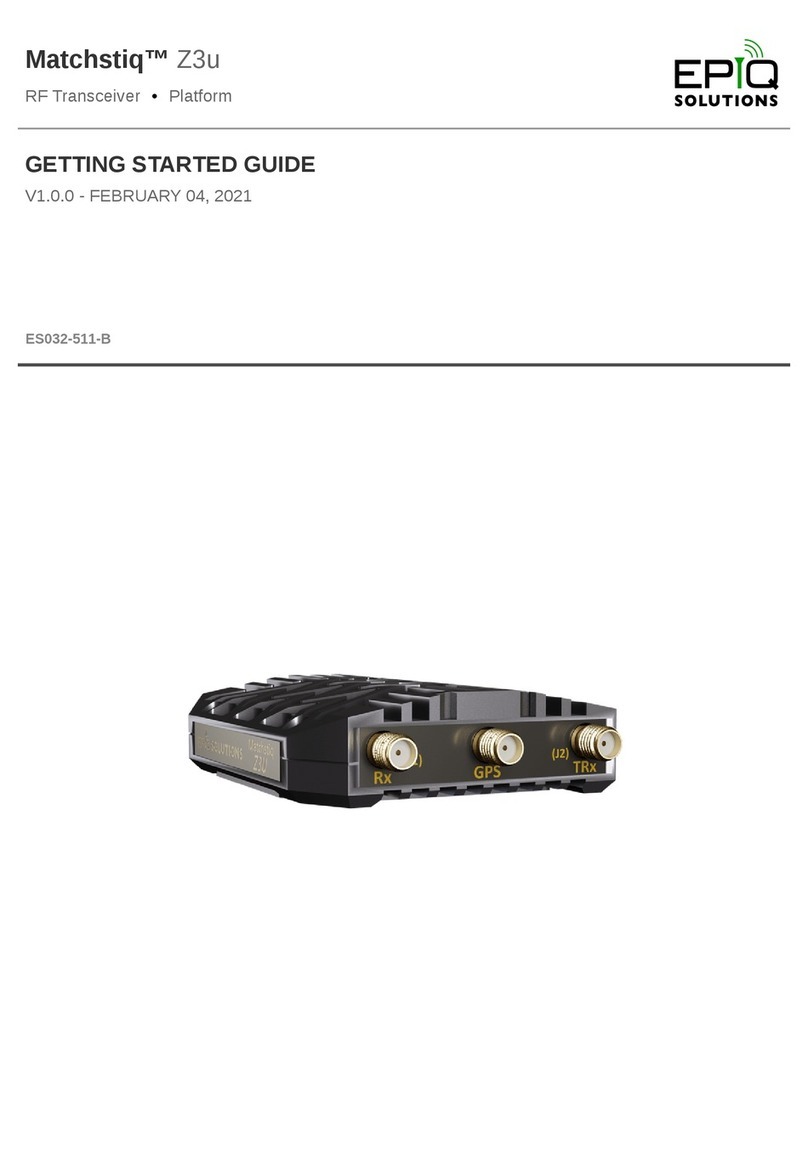
Epiq Solutions
Epiq Solutions Matchstiq Z3u User manual
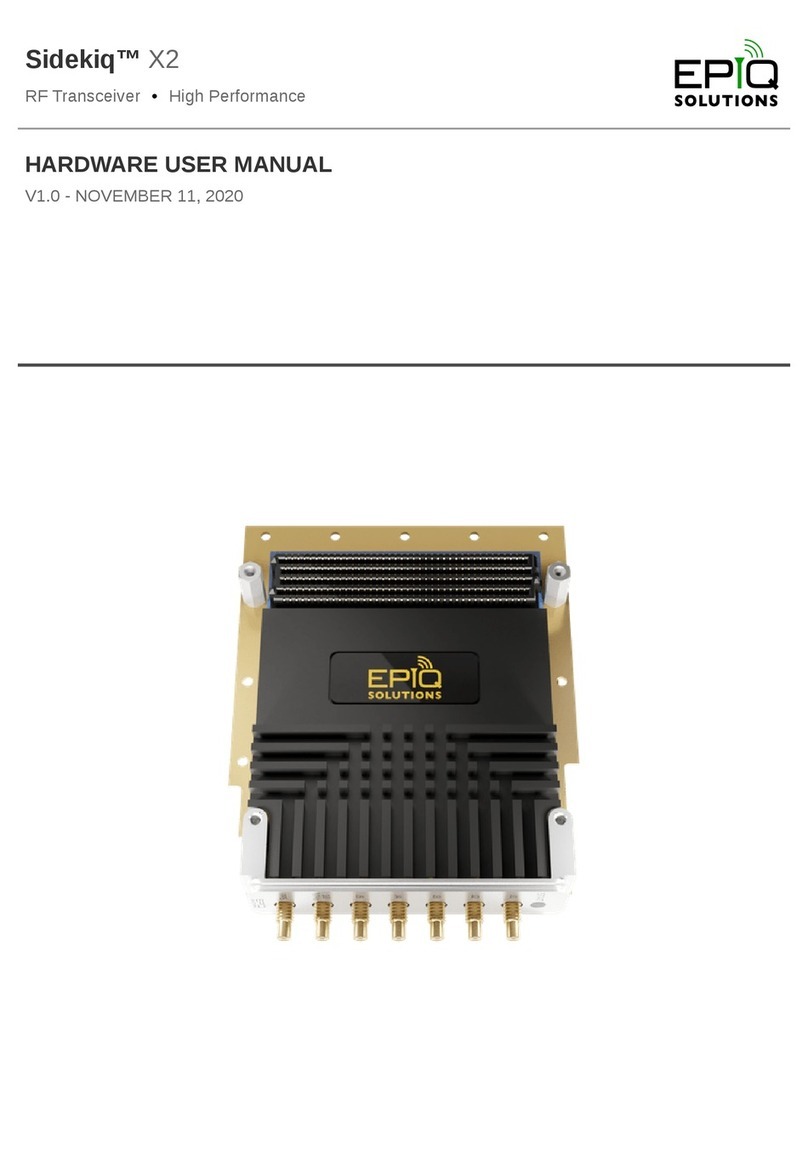
Epiq Solutions
Epiq Solutions Sidekiq X2 Instructions for use

Epiq Solutions
Epiq Solutions Sidekiq NV100 Instructions for use

Epiq Solutions
Epiq Solutions Sidekiq X2 User manual
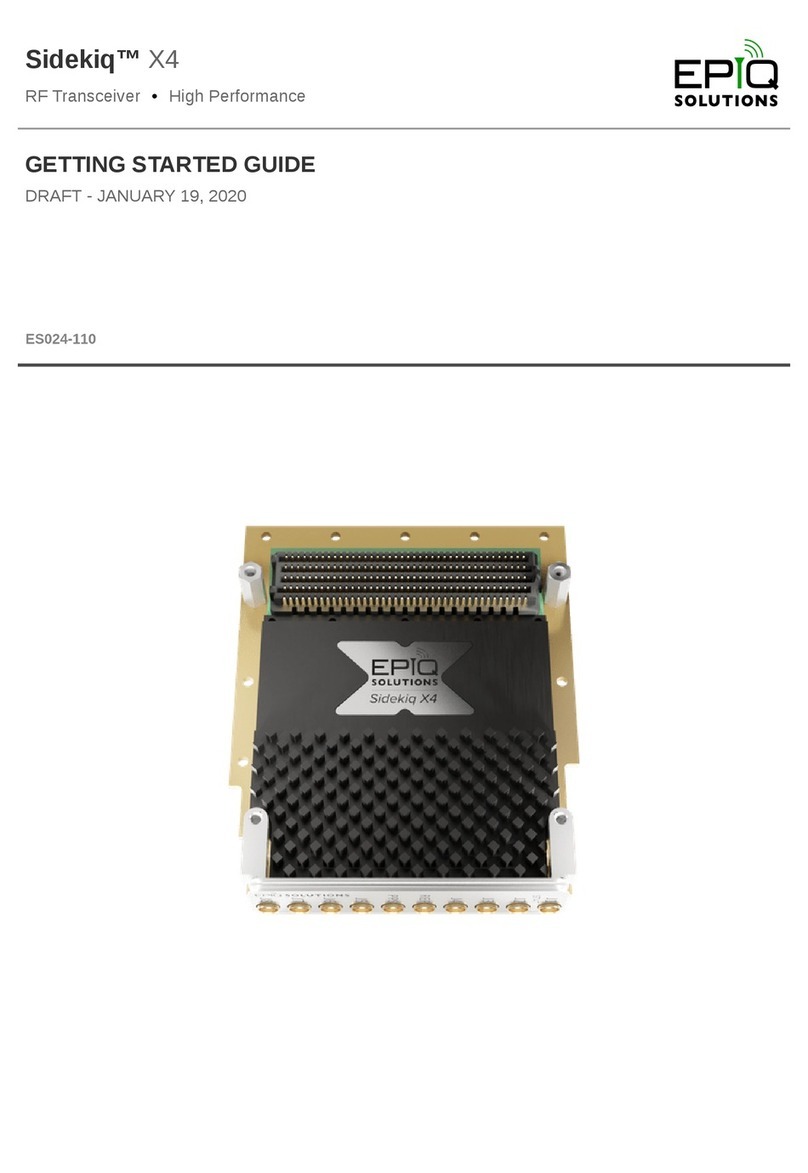
Epiq Solutions
Epiq Solutions Sidekiq X4 User manual
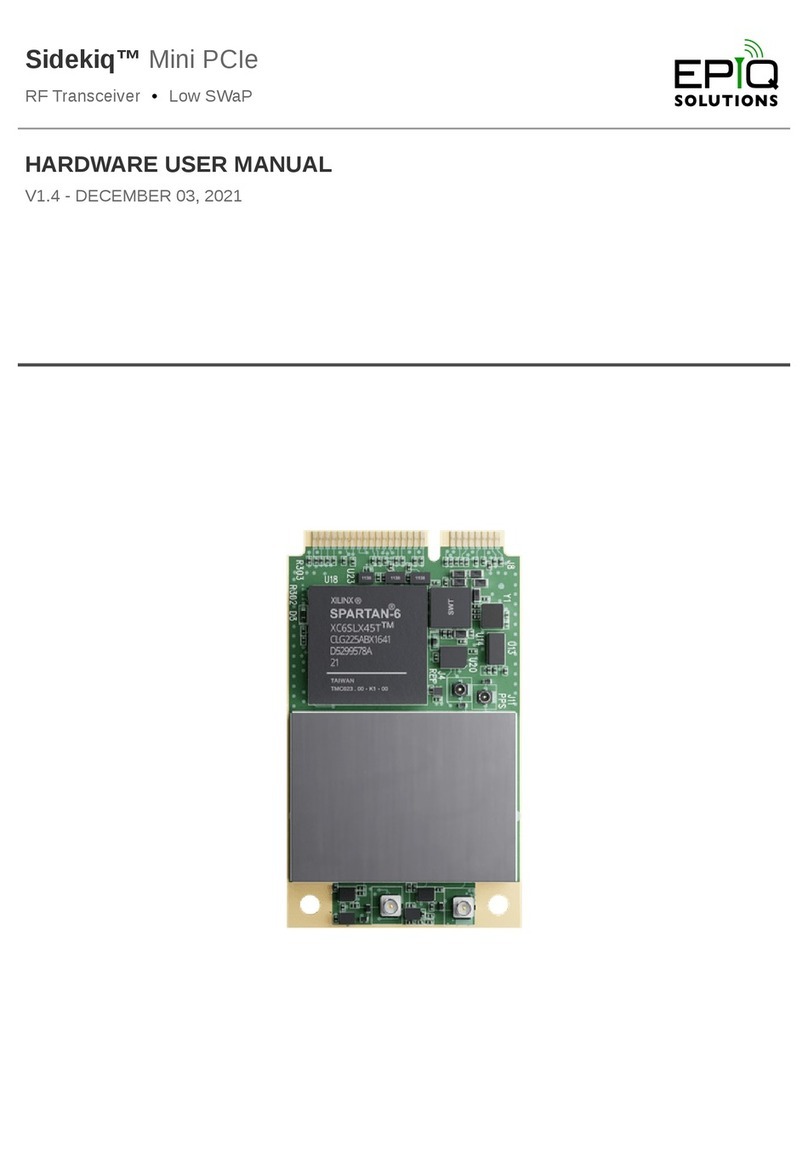
Epiq Solutions
Epiq Solutions Sidekiq Mini PCIe Instructions for use
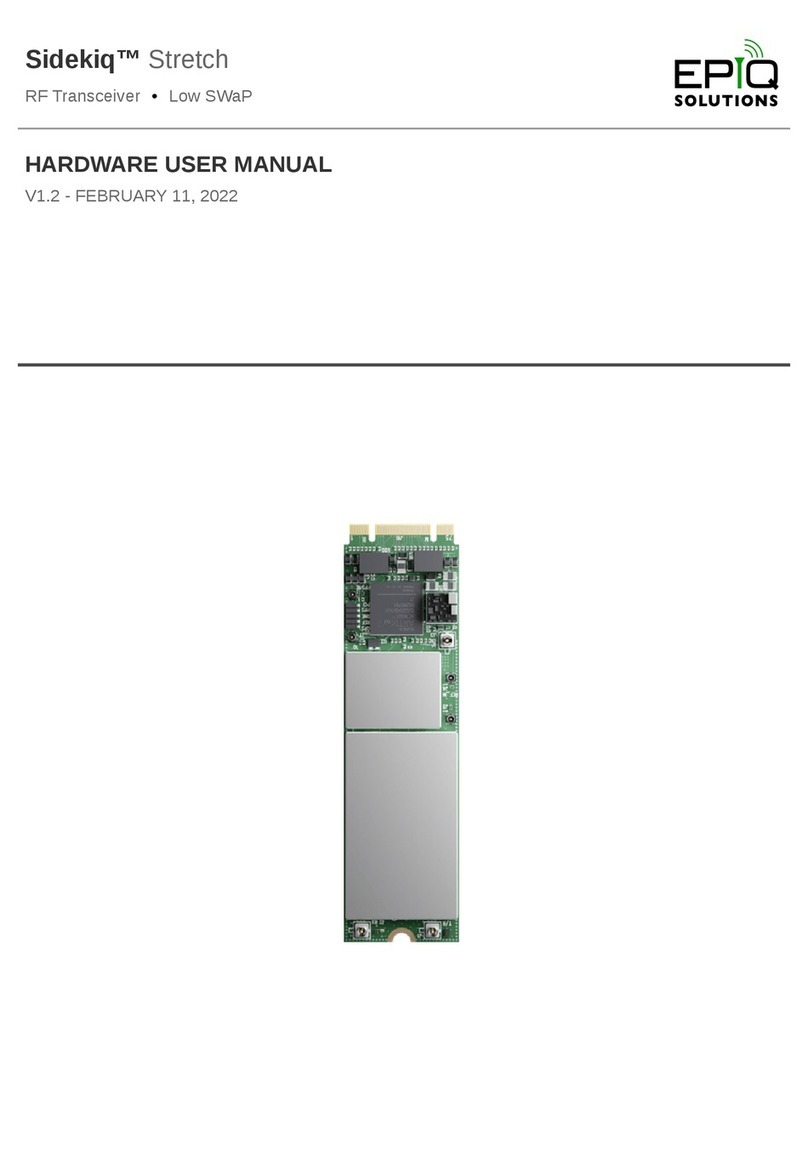
Epiq Solutions
Epiq Solutions Sidekiq Stretch Instructions for use
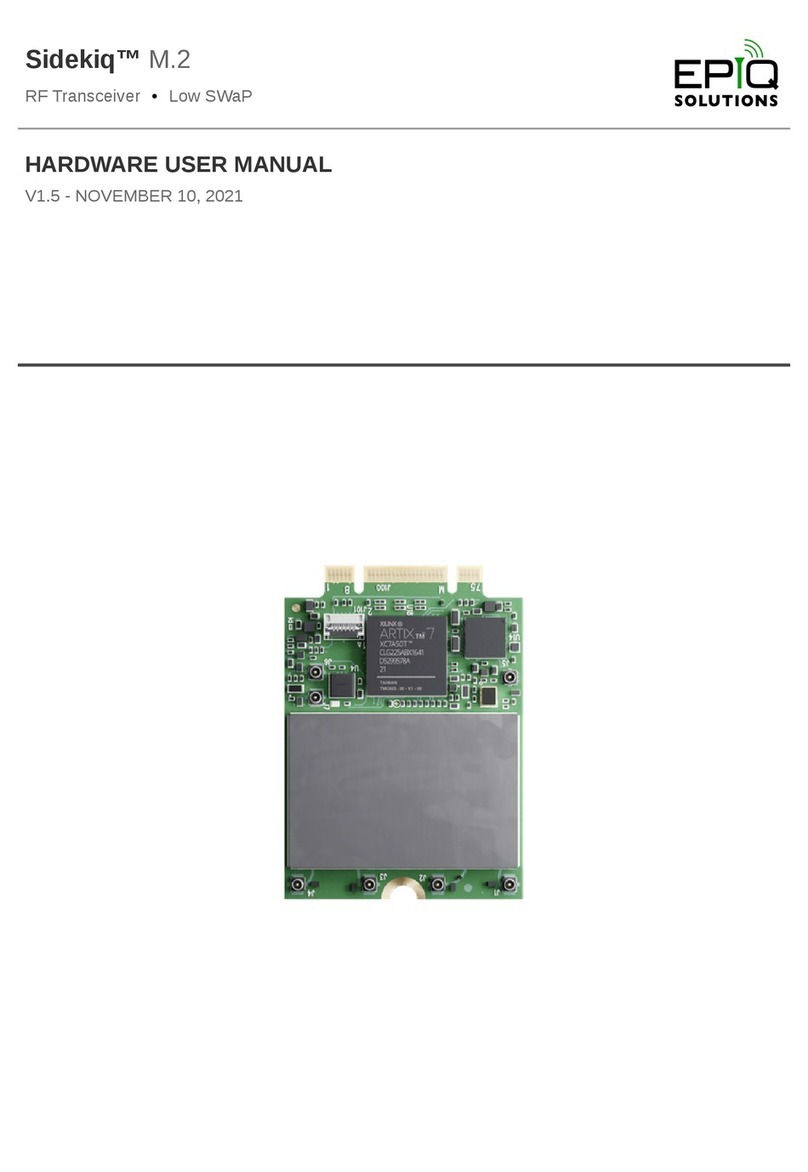
Epiq Solutions
Epiq Solutions Sidekiq M.2 001 Instructions for use

Epiq Solutions
Epiq Solutions Sidekiq X4 Instructions for use
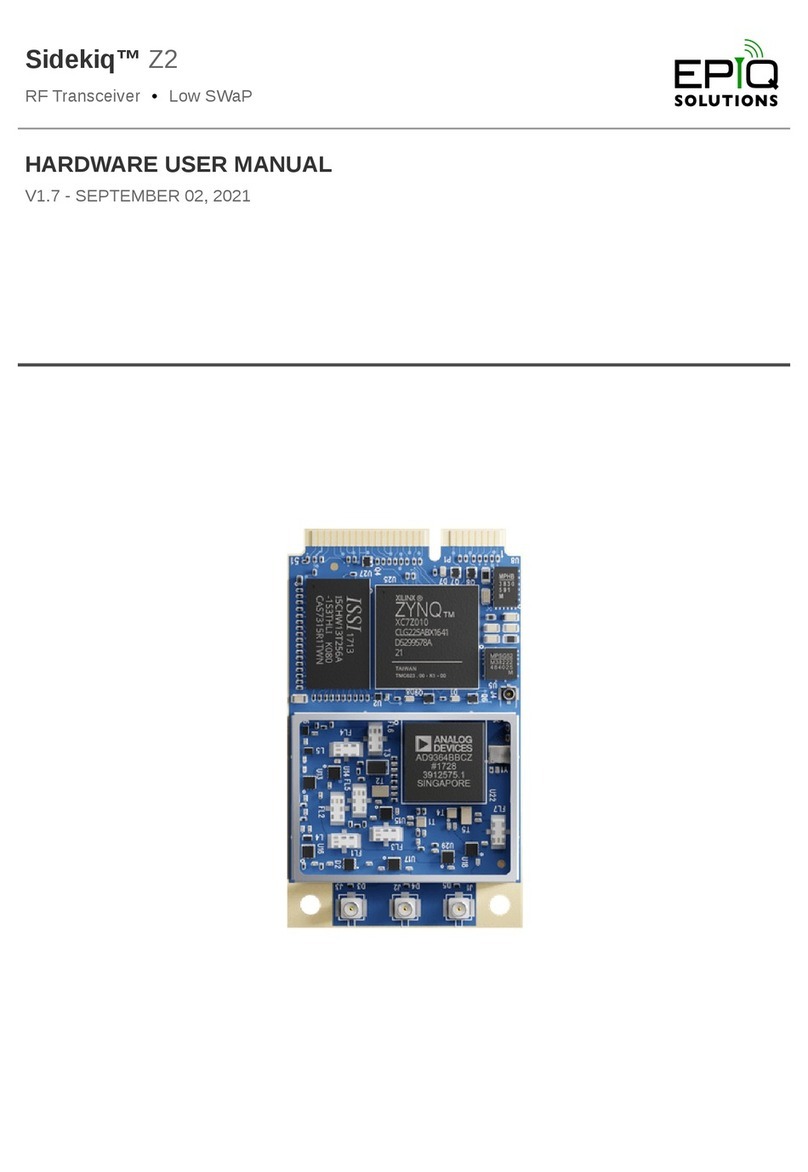
Epiq Solutions
Epiq Solutions Sidekiq Z2 Instructions for use



